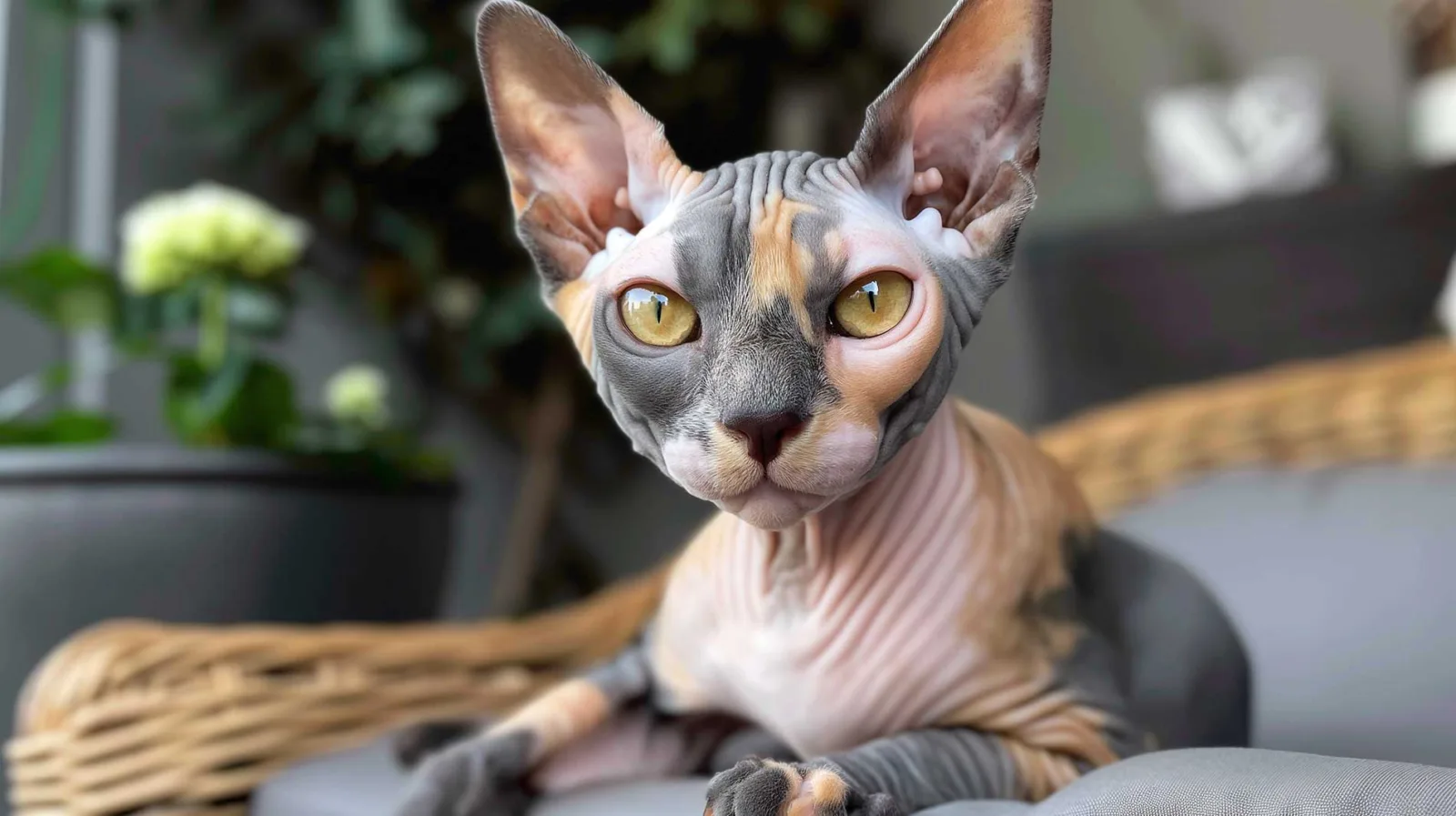The structure of feline skin
Ever wondered what makes your cutie so fluffy? It’s not just the fur, but the skin of a cat has much to do with it as well. Let’s break down layer by layer of your cats skin to see what’s really going on under all that fur.
Layers of the skin and types of skin cells of cats
- Epidermis: This is the outermost layer, made of mostly keratinocytes and acting as a shield against the elements. It’s like the tough outer shell of an armor. Keeping your cat safe from the sun, bacteria, and other environmental hazards. It also contains the melanocytes, which give your cat’s skin and fur color. As well as the Langerhans cells which are responsible for immune responses.
- Dermis: Beneath the epidermis lies the dermis, the bustling hub of activity. Here, you’ll find blood vessels, nerve endings, oil glands, and hair follicles. This is where all the action happens, from sensation to temperature regulation. Blood vessels dilate to cool the cat down and constrict in cold temperatures. The dermis has receptors for pressure, pain, and heat, as well as hair follicle muscles that react to stress and cold through hormones.
- Subcutis: Deeper still is the subcutis, where fat is stored to provide insulation and padding. It protects the bones and organs from external influences, and is also housing blood vessels.
And in case you were wondering: Cats do have sweat glands, and they sweat when they’re scared or stressed. Even though their dermis does not house as many sweat glands as for example in human skin, they make up for that on their paws. That’s why they leave little wet prints on the examination table at the vet. 😭 Unlike dogs, they usually do not pant to cool off. Only if they are very exhausted or stressed, you can exhibit this behavior as well.

Skin color in cats
When you shave a calico cat, the pattern of colored spots remains visible on the skin. This enduring visibility of color patterns is due to the presence of pigment cells in the skin called melanocytes. These cells produce melanin, the same pigment that gives color to human skin and hair. In cats, melanocytes are distributed in the skin similarly to how they are distributed in the fur. The color and pattern of your cat’s coat are determined by which genes are expressed where these melanocytes are active.

In some cats, the color of their fur is also expressed through the pigmentation of their skin. This is particularly noticeable in calico cats, where the differently colored spots are visible on the skin, much like in hairless Sphynx cats. Other than the stripes of a tabby cat that are rarely visible on the skin. The stripes are a feature of the hair itself, not the skin. This striped pattern in the individual hair is due to the agouti gene. You can learn more about it in our article on cat fur. The brightest color in cat skin is a blush pink. There is no white skin in cats because white fur lacks melanin. However, if a cat has a distinctly spotted fur pattern, these spots can be quite prominent on the skin as well, because there’s melanin present in the skin.
What functional roles does the skin play in cats?
Protection and storage
- Barrier against harmful agents: The skin acts as a barrier, shielding your cat’s body from harmful UV rays, bacteria, and other environmental pollutants. As mentioned, the epidermis is involved in the immune system’s task to detect and fight off invasive organisms.
- Insulation and temperature regulation: Fur serves as a natural insulator, helping to regulate your cat’s body temperature in both hot and cold conditions. Thick coats provide warmth in chilly weather, while lighter coats help keep them cool in the heat.
- Water retention: Cats also store water in their skin, which is why, if a cat is dehydrated, you can notice her skin is missing flexibility (same goes for most mammals as well as humans and dogs).
Communication, or: do cats get goosebumps?
When cats experience stress, such as during a vet visit, they exhibit a physiological response known as piloerection. Tiny muscles at the base of each hair, called arrector pili, contract under the influence of the sympathetic nervous system. This reaction pulls the hair upright, making the cat appear larger to ward off threats. Similar to goosebumps in humans but resulting in raised fur. Concurrently, this stress induces the shedding of loosely anchored hairs in the resting phase (telogen), leading to noticeable hair loss. This makes the cat look puffier and more bristled, an intimidation tactic that, while dramatic, is perfectly normal and harmless.

Sensory perception through touch receptors
The skin is studded with touch receptors, allowing your cat to sense the world around them through touch. From grooming to play, these receptors play a vital role in your cat’s interactions with their environment.
- Merkel Discs: They are sensitive to sustained pressure and texture and are involved in the sensation of fine touch and pressure, which supports the ability to distinguish shapes and textures.
- Meissner’s Corpuscles: They are sensitive to light touch and changes in texture as well as low-frequency vibration or flutter. They are located in the dermal papillae just beneath the epidermis and contribute to the sensitivity of paws, lips, and other areas, which helps cats in exploring their environment and detecting subtle movements.
- Pacinian Corpuscles: These are sensitive to deeper pressure and high-frequency vibrations, and aid in the perception of distant or more significant impacts through surfaces like the ground. These are found in the front paws, in the skin folds around the claws and in the paw pads.
These receptors are concentrated in areas that engage most with the environment – paws, face, and whiskers.
The highest density can be found in the whisker pads, providing cats with acute sensitivity where it’s most needed. The strategic distribution of these receptors supports various behaviors such as hunting, where precision is critical, and social interactions like grooming and playful fighting.
Cats’ sensitivity ensures that they are aware of even the smallest bugs or changes in their immediate environment. Tactile information can trigger instinctive behaviors in cats. While intriguing textures can lead to exploratory scratching or rubbing, an unexpected touch might result in a jump, hiss, but at least the famous brrrp sound. You may have noticed this phenomenon yourself, as soon as you attempted to lightly touch your cat’s fur without her noticing.
We hope you enjoyed this article. Let us know what you think about it and share it with your friends!








